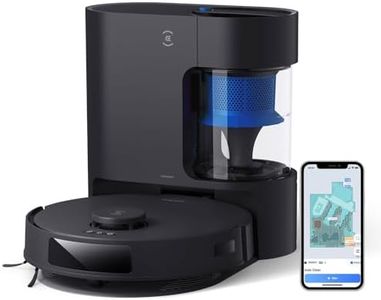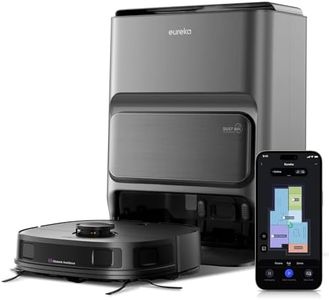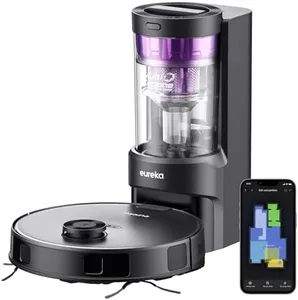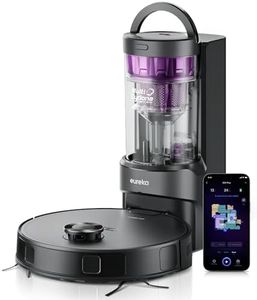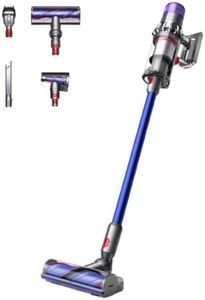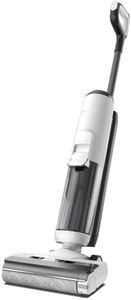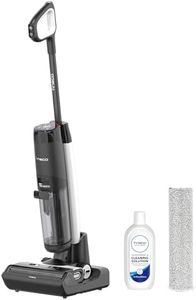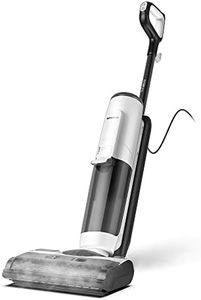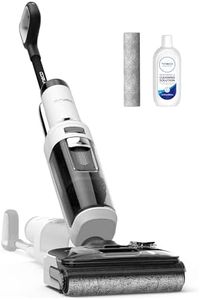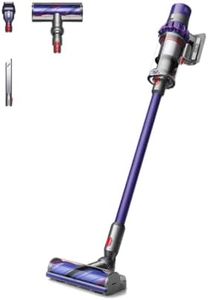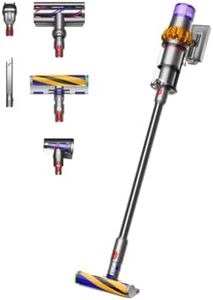We Use CookiesWe use cookies to enhance the security, performance,
functionality and for analytical and promotional activities. By continuing to browse this site you
are agreeing to our privacy policy
10 Best Bagless Vacuums
From leading brands and best sellers available on the web.Buying Guide for the Best Bagless Vacuums
Choosing the right bagless vacuum cleaner can make cleaning your home easier, faster, and more convenient. Bagless vacuums are popular because they save you from the hassle of buying and replacing vacuum bags, and they typically make it easy to see when it's time to empty the dirt. Before making a decision, it's important to consider features that relate to your living space, the types of surfaces you clean, and how frequently you use the vacuum. Understanding the main specifications will help ensure you select a vacuum that best fits your home and lifestyle.Suction PowerSuction power refers to how well the vacuum can pull up dirt and debris from floors and carpets. It's often measured in units like Air Watts or kPa, but sometimes just described as 'strong' or 'high'. Higher suction is helpful for deep cleaning carpets and picking up pet hair, while lower suction can be gentler for delicate rugs. People with mostly hard floors or small living spaces may not need extremely high suction. Consider the surfaces in your home and pick a level of suction power that matches your cleaning needs.
Bin CapacityBin capacity is the amount of dirt and dust the vacuum can hold before you need to empty it. Small bins mean the machine will be lightweight and compact, which is good for small apartments or quick clean-ups, but they will need more frequent emptying. Larger bins are better if you have a bigger home or do less frequent but more thorough cleaning. Choose the bin size based on how large your space is and how often you want to empty the vacuum.
Filtration SystemThe filtration system in a bagless vacuum is important for trapping fine dust and allergens that might otherwise get released back into the air. Some vacuums use standard filters, while others use HEPA filters which can capture even tiny particles, making them especially good for allergy sufferers. If you or your family members have allergies or asthma, or you want cleaner air in your home, choosing a vacuum with a high-quality filter is a smart move.
Weight and PortabilityWeight and portability refer to how heavy and easy to maneuver the vacuum is. Lightweight vacuums are easier for everyone to use, especially if you need to carry it up stairs or plan to do quick clean-ups. Heavier units may offer more power but can be hard to move around, especially in multi-story homes. Consider your physical ability and the layout of your home when choosing how portable your vacuum should be.
Corded vs Cordless OperationBagless vacuums come in both corded and cordless versions. Cordless vacuums offer greater freedom and flexibility, allowing you to clean anywhere without worrying about power outlets, but they need to be charged and may have limited battery life. Corded vacuums provide continuous power, making them great for long cleaning sessions, but you're limited by the cord length and need to plug and unplug as you move. Think about how long you normally clean and whether you prefer the convenience of no cord versus unlimited runtime.
Included AttachmentsAttachments are the extra tools that come with your vacuum, such as crevice tools, brushes, and pet hair tools. The right set of attachments helps you clean more types of surfaces, like furniture, stairs, or even car interiors. If you have pets, look for specialized pet hair tools, while those with a variety of floor types may appreciate a range of brushes. Think about the areas and surfaces you clean most often and make sure the vacuum comes with attachments to match.
Noise LevelNoise level measures how loud the vacuum is while in use. If you have young kids, pets, or just want a quieter environment, a lower noise vacuum is a better pick. Noisy vacuums can be effective but might be disruptive. Look for decibel (dB) ratings if you’re sensitive to sound, and consider when and where you typically clean to decide how important a quieter vacuum is for you.
